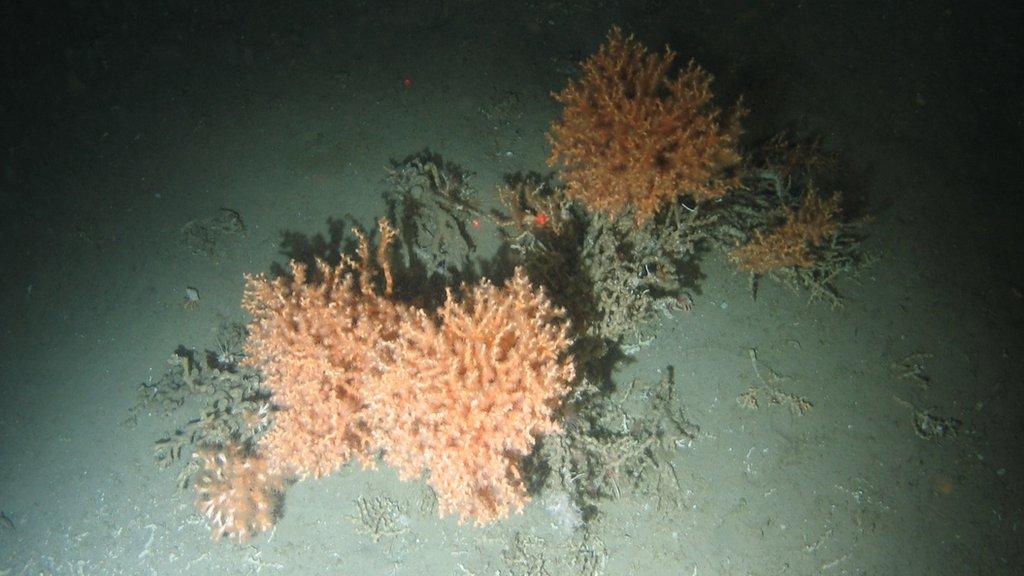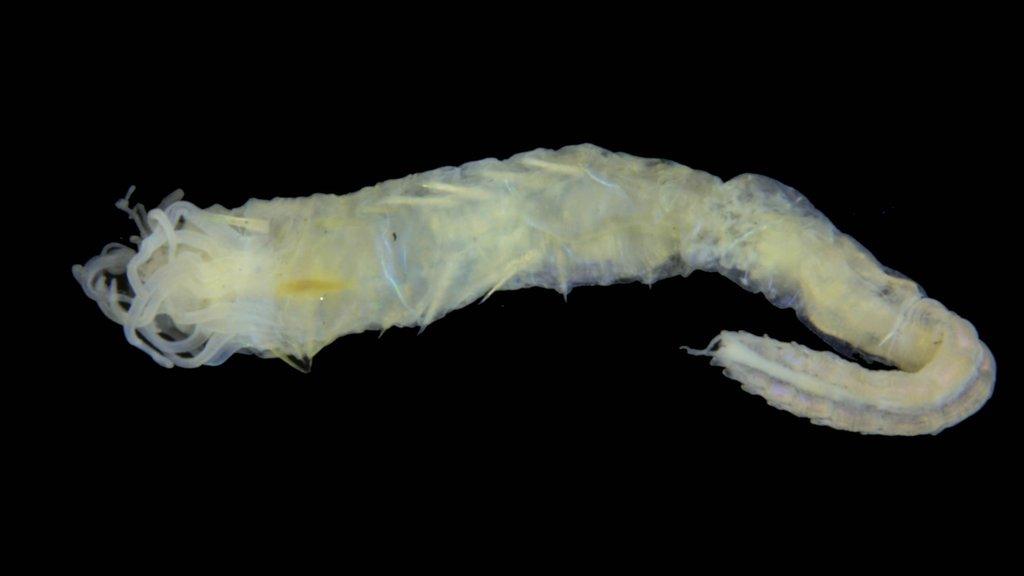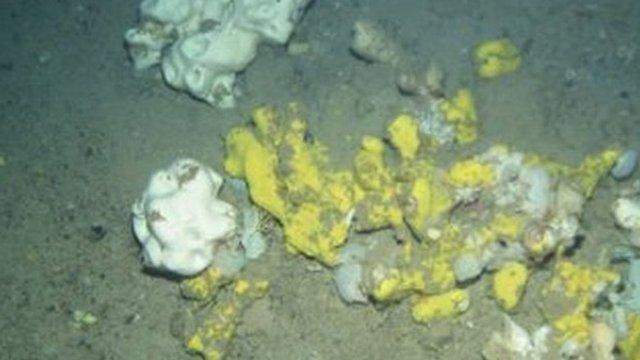Survey begins of damaged deep sea coral off Scotland
- Published

A deep sea shark in an image taken by a robotic submarine
Scientists are surveying a rare deep water coral reef off the coast of Scotland to see if it has recovered following years of trawler damage.
Known as the Darwin Mounds, the corals were discovered in 1998 and later declared a marine protected area.
The reef provides a habitat for marine animals, but has been slow to recover following the damage.
So far, only a few colonies of living hard corals have been found on the tops of the mounds.
The expedition is the first for eight years and is using unmanned submarines to explore the seabed.
Swarms of squid and a longnose velvet dogfish, a species of deep sea shark, more than 1m (3ft) long, have been encountered by the survey team so far.
The team, led by the National Oceanography Centre (NOC) and University of Southampton, is made up of scientists and engineers.
They are using a three-D imaging system to create a detailed map of the area, measured at about the size of one hundred football pitches.
The Darwin Mounds lie 1,000m (328ft) beneath the surface of the North Atlantic about 185km (115 miles) off Cape Wrath in Sutherland in the Highlands.
The habitat is an extensive area of sandy mounds, each about 100m (328ft) in diameter and 5m (16ft) high.
In 2003, the area was given Marine Protected Area status to prevent further damage.
Scientists last examined the coral reef in 2011 and found it had still to recover from the deep-sea trawling.
- Published6 September 2019

- Published18 June 2019

- Published27 July 2018
